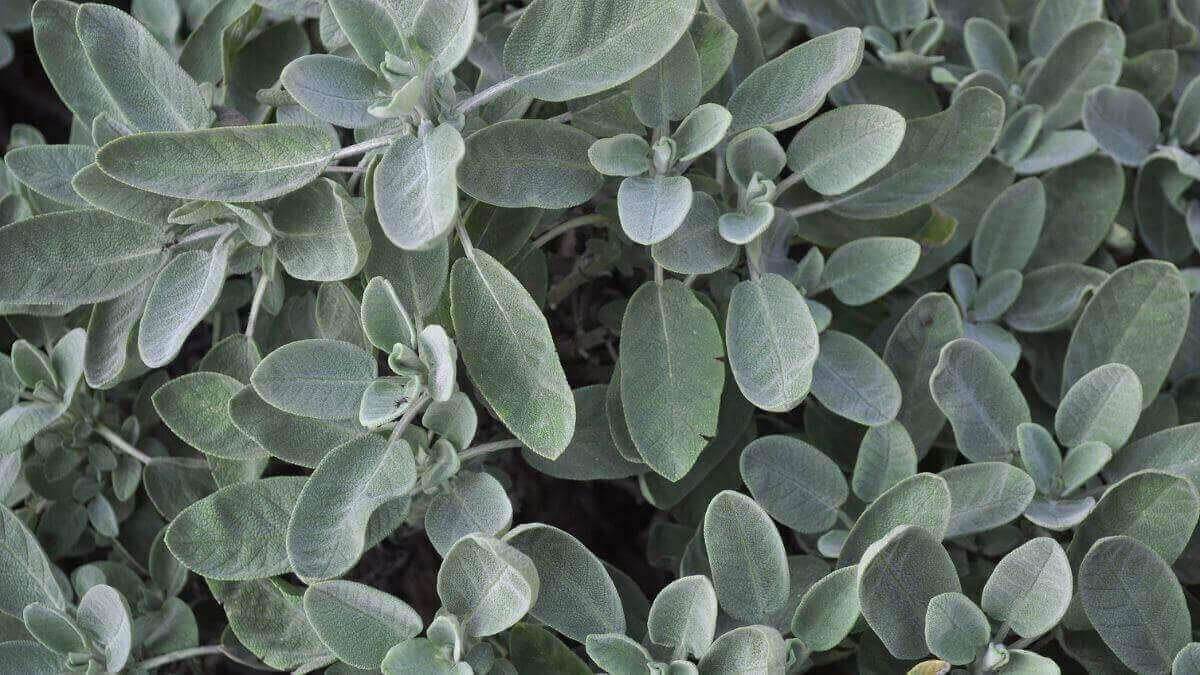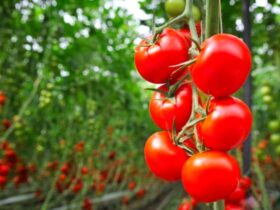There are many Different Types of Sage Plants, each with unique characteristics. Some popular varieties include Salvia officinalis and Salvia apiana.
Sage plants, belonging to the genus Salvia, are esteemed for both their culinary and medicinal properties. Among the numerous species, garden sage (Salvia officinalis) is renowned for its aromatic leaves, frequently used to flavor dishes. White sage (Salvia apiana), on the other hand, is revered in Native American ceremonies for its purifying smoke.
These resilient perennials thrive in well-drained soil and are distinguished by their striking flowers, which attract a host of pollinators. Their versatility extends beyond the kitchen and ritual use, as they are also cherished for their ornamental appeal in gardens. With their easy care and drought resistance, sage plants are a valuable addition to any plant enthusiast’s landscape.
Introduction To Sage: Understanding The Salvia Genus
Sage plants, part of the Salvia genus, are celebrated worldwide. There exist hundreds of species. This versatile plant group offers both culinary and ornamental benefits. Sage adorns gardens with vibrant flowers and aromatic leaves. It enriches dishes with its robust flavor.
Defining Sage: A Culinary And Ornamental Herb
The sage plant, known scientifically as Salvia, stems from the mint family. It’s a favorite in kitchens and landscapes. Sage leaves often feature in recipes. The flowers attract pollinators to gardens. Varieties range from the popular kitchen sage to colorful ornamental types.
- Common Sage (Salvia officinalis) – A kitchen staple.
- Pineapple Sage (Salvia elegans) – Known for its sweet scent.
- Russian Sage (Perovskia) – Loved for bluish-purple blooms.
Historical And Cultural Significance Of Sage
Regarding historical importance, sage holds a dignified spot. Ancient Romans valued it for its healing properties. It was a symbol of longevity and wisdom. Cultures globally used sage in rituals and medicine. Today, it remains a token of wisdom in many societies.
Culture
Use of Sage
Ancient Egyptians
Medicinal remedies
Native Americans
Spiritual ceremonies
Chinese
Traditional medicine
Scientific Classification Of Sage Plants
The world of sage plants spans far across different regions and climates. Understanding the scientific classification of these aromatic plants unravels their shared traits and individual uniqueness. This classification allows gardeners and enthusiasts to better comprehend the diversity among sage species.
Sages fall within the genus Salvia, part of the mint family, Lamiaceae. The genus includes both annual and perennial plants. Their classification helps in identifying the various types used in cooking, medicine, and ornamentation. Each species carries distinct features, adapted to its habitat. These shared characteristics define their place in the botanical hierarchy.
The Taxonomy Of Salvia Species
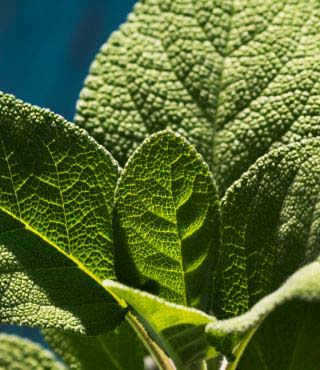
Salvia species share a taxonomic structure that groups them within broader classifications:
KINGDOM – Plantae
PHYLUM – Tracheophyta
CLASS – Magnoliopsida
ORDER – Lamiales
FAMILY – Lamiaceae
GENUS – Salvia
This hierarchy starts at kingdom Plantae and narrows down to genus Salvia. Such classification informs plant selection for different uses.
Variability And Species Diversity In Sage
The genus Salvia showcases remarkable diversity. With over 900 species worldwide, sage plants adapt to various climates and terrains:
- Salvia officinalis – commonly used culinary sage
- Salvia splendens – known for vibrant flowers
- Salvia apiana – White sage, valued in cultural rituals
- Salvia divinorum – known for its psychoactive properties
These examples reveal the array of sage plants available. They suit different purposes, such as cooking, ornamental displays, or cultural practices.
Culinary Sages: Aromas For Every Kitchen
Kitchens around the world treasure the rich aromas of culinary sages. Not only do they bring unique flavors, but they also offer a variety of health benefits. Different types of sage play a starring role in dishes from meats to desserts. Let’s explore the most beloved varieties that can elevate any home cooking experience.
Common Sage (salvia Officinalis) And Its Varieties
Common Sage, known as Salvia officinalis, is a staple in kitchens. Its robust flavor pairs well with:
- Poultry
- Pork
- Stuffing
- Sausages
This plant comes in different varieties:
Variety Flavor Note Leaf Color
Purple Sage Mild Deep Purple
Golden Sage Light Green and Gold
Tricolor Sage Decorative Green, White, Purple
Each variety adds its own twist to dishes.
Pineapple Sage (salvia Elegans): A Sweet Addition
Pineapple Sage is known for its sweet fragrance. The leaves offer a hint of tropical flavor. It’s a perfect match for:
- Fruit
- Beverages
- Desserts
Its bright red flowers can also beautify any garden.
Other Notable Culinary Sages
Beyond the common and pineapple variants, other sages deserve a spotlight:
- Clary Sage (Salvia sclarea) – Herbal and Earthy.
- Honey Melon Sage (Salvia elegans ‘Honey Melon’) – Melon-like Sweetness.
- White Sage (Salvia apiana) – Intense and Aromatic.
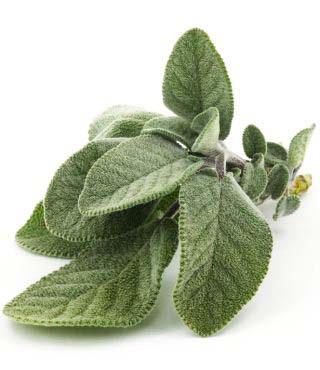
Each of these brings a distinct flavor that can surprise and delight any palate.
Experiment with these sages to discover your favorite aromatic addition to your next culinary creation!
Ornamental Sages: A Garden’s Delight
Sage plants bring more than just flavor to the table. They are also a visual feast. Ornamental sages dazzle with their colorful blooms. They turn any garden into a lively palette.
Mexican Bush Sage (Salvia leucantha): A Showy Purple
Mexican Bush Sage (salvia Leucantha): A Showy Purple
Mexican Bush Sage stands out with its velvet flowers. This sage offers long purple blooms that can span up to 30 cm.
- Height: Up to 4 feet
- Blooming Season: Late summer through frost
- Light Requirements: Full sun
Scarlet Sage (salvia Splendens): Vivid Red Blooms
The Scarlet Sage is a favorite for bold color seekers. Its red flowers capture eyes and hearts alike.
Feature Detail
Height 1 to 3 feet
Blooming Season Summer to fall
Light Requirements Full sun to partial shade
Russian Sage (Perovskia atriplicifolia): Misty Lavender Appeal
Russian Sage offers a softer touch. This sage has misty lavender flowers. They look like a cloud of color.
- Height: 3 to 5 feet
- Blooming Season: Mid-summer to autumn
- Light Requirements: Full sun
Medicinal Sages: Traditional And Modern Uses
Medicinal sages have been cherished for centuries. From natural remedies to spiritual ceremonies, these plants offer a wealth of benefits. In both traditional practices and modern wellness, medicinal sages play a vital role. Let’s explore some of the most revered types and their uses.
Clary Sage (salvia Sclarea): An Herbal Remedy
Clary Sage is a plant with a long history. It is known for its soothing effects. People often use it to help with sleep and to calm nerves. Its essential oil is popular in aromatherapy. It helps with everything from stress relief to easing menstrual pains.
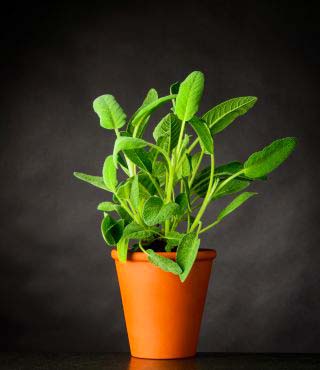
White Sage (salvia Apiana): Purification And Healing
White Sage stands out in the sage family. Cultures have used it for centuries to clear spaces and auras. Its smoke is believed to purify and protect. White Sage isn’t just for spiritual rituals; it also has antiseptic and antibacterial properties. This makes it useful for cleansing wounds and promoting healing.
Exploring Lesser-known Medicinal Sages
There are many other sages with health benefits. Some are not as well-known. Each has its own unique properties. They can range from anti-inflammatory to antioxidant effects. Here’s a look at a few:
- Mexican Sage: Used for its calming properties.
- Pineapple Sage: May improve mood and aid digestion.
- Russian Sage: Sometimes applied to skin for its anti-bacterial qualities.
By including these sages in your wellness routine, you can tap into ancient wisdom and natural healing.
Caring For Sage Plants In Your Garden
Gardeners love sage plants for their aromatic leaves and lovely flowers. Caring for Sage Plants in Your Garden is a joyful task that brings a touch of the Mediterranean to your outdoor space. Sage plants, with their various types, can thrive in many gardens, given the right conditions. This section will guide you through the essential care steps to ensure your sage plants grow healthy and strong.
Soil Requirements And Sun Exposure
Sage plants prefer well-drained, fertile soil that is not too rich. A pH between 6.0 and 7.0 is ideal. To check your soil’s drainage, dig a hole about a foot deep and fill it with water. If it drains within an hour, your soil is good to go. For soil improvement, mix in some sand or organic compost.
When talking about sun exposure, full sun is the best for most sage varieties. Aim for at least 6 hours of sunlight daily. The right balance of sun will encourage strong growth and the development of the aromatic oils that sage is known for.
Watering And Feeding Practices For Healthy Sages
Sage doesn’t like wet feet. This means you should water only when the soil feels dry to the touch. Overwatering can cause root rot. A good rule of thumb is to water deeply but infrequently, allowing the soil to dry between waterings.
When it comes to feeding, less is more with sage. Use a balanced, slow-release fertilizer in early spring, and that should be enough for the season. Overfeeding can lead to lush foliage with reduced flavor and fragrance. Keep an eye on your sage and adjust your watering and feeding as needed to promote healthy, aromatic growth.
Propagation Techniques For Sage
Discovering the art of sage plant propagation unlocks endless gardening opportunities. Bringing new sage plants to life can be rewarding and fun. Whether you’re a beginner or expert gardener, learning how to propagate sage ensures a constant supply of this aromatic herb. Mastering the techniques described here will help your sage garden flourish.
Growing Sage From Seeds
Starting sage from seeds is a test of patience, yet immensely gratifying. Sage seeds can be finicky, but with the right approach, they’ll germinate into healthy plants. Here’s a step-by-step guide:
- Prepare a seed tray with a well-draining, sterilized potting mix.
- Sprinkle the sage seeds lightly over the soil, as they need light to germinate.
- Cover the tray lightly with a thin layer of potting mix or fine vermiculite.
- Keep the soil moist, but avoid water logging the seeds.
- Place the tray in a warm spot with plenty of indirect sunlight.
- Patience is key — seeds may take 2-3 weeks to sprout.
Once seedlings have a couple of sets of true leaves, it’s time to transplant them into individual pots or your garden.
Cuttings And Division: Multiplying Your Sage Plants
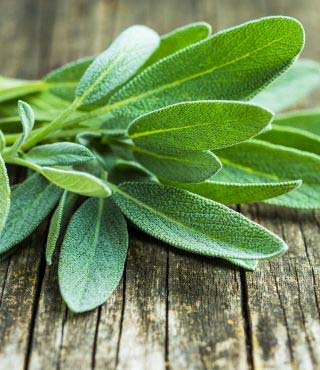
Propagation by cuttings and division is faster than seeds. For gardeners eager to expand their sage collection, these methods are more reliable.
For cuttings:
- Choose a healthy parent plant.
- Cut a 3-4 inch piece just below a leaf node.
- Strip off the lower leaves, exposing the nodes.
- Dip the cut end in rooting hormone powder for better results.
- Place the cutting in moist soil until roots develop.
With division:
- Carefully dig up an established sage plant.
- Divide the root ball into sections, each with leaves and roots.
- Replant each section into a separate pot or garden spot.
The table below summarizes the propagation methods for sage:
Propagation Method Description Estimated Time
Seeds Plant seeds in soil; requires light and warmth. 2-3 weeks for germination
Cuttings Use sections of stems from a parent plant. 4-6 weeks for rooting
Division Separate portions of an established plant. Immediate plantation
Regardless of the method, regular care and patience are crucial for propagation success. Give your sage plants time to establish and soon, you’ll enjoy a bountiful sage garden!
Pests And Diseases Affecting Sage Plants
The health of sage plants can suffer due to pests and diseases. Ensuring these aromatic herbs thrive requires understanding and addressing these issues promptly.
Common Pests And Their Control
Spider mites, aphids, and whiteflies can threaten sage plants. These pests suck sap, weakening the plant over time.
Control methods include:
- Regular inspection: Check leaves for pests and signs of damage.
- Water spraying: Detach pests from plants by gently spraying leaves with water.
- Organic insecticides: Neem oil or insecticidal soap can help control infestations when applied properly.
- Natural predators: Introduce ladybugs or lacewings to your garden as they feed on these pests.
Preventing Fungal And Bacterial Diseases
Sage can fall victim to fungal and bacterial diseases like powdery mildew and root rot. Prevent these by:
- Good air circulation: Space plants to ensure adequate airflow.
- Proper watering: Water at the base, avoiding wetting the leaves.
- Sunlight: Plant sage in areas receiving full sun.
- Clean tools: Disinfect garden tools to avoid spreading pathogens.
Harvesting And Preserving Sage
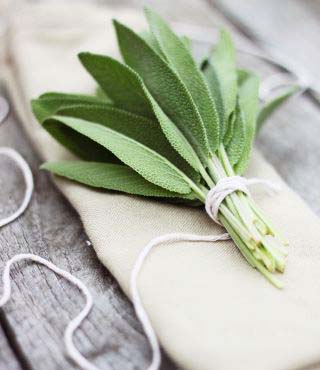
Sage, with its earthy green hue and whispery soft leaves, is a favorite in both the garden and the kitchen. Its aromatic presence is not just for immediate use; sage can be harvested and preserved for flavoring dishes year-round. Let’s explore how to properly gather and store this versatile herb.
Optimal Time For Harvesting Sage Leaves
Timing is key in harvesting sage. To guarantee the strongest flavor, look for the peak of freshness. This is when the plant is thriving, just before it blooms.
- Pick leaves in the morning, after dew evaporates but before the sun stands high. This ensures moisture content is low, yet essential oils are at their peak.
- Spring and early summer bring the most flavorful leaves.
- Trim the top growth to encourage a fuller, bushier plant.
Drying And Storing Sage For Long-term Use
Preserving sage involves drying the leaves, letting their essence concentrate into a potent spice for your culinary adventures. Here’s a simple breakdown of the process:
- Rinse leaves gently and pat them dry with a clean cloth. Avoid bruising.
- Spread out leaves on a drying rack or flat surface. Allow for good air circulation.
- Keep them in a dark, warm, and dry place for several days to a week.
- Once crisply dry, crumble the leaves, or store them whole in an airtight container.
- Label containers with the date of storage. Sage maintains its best quality for about one year.
Remember to regularly check on the drying progress. Crumbled leaves should be stored in a cool, dark place to preserve their potency.
Innovative Uses And Recipes For Sage
Sage, a versatile herb, adds earthy flavors to dishes and offers various applications beyond cookery. Known for its aromatic properties, sage plants come in different types, each with unique qualities suited for innovative uses in the kitchen and around the home.
Infusing Flavors: Cookery With Sage
Transform meals with sage’s robust flavor, taking dishes from ordinary to extraordinary. Try these ideas:
- Brown butter sage sauce: Perfect for pasta, fish, and poultry.
- Sage-infused olive oil: Drizzle over vegetables before roasting.
- Herb seasoning mixes: Combine with thyme, rosemary, and marjoram.
Create a sage rub for meats or bake sage leaves into bread for a surprise twist.
Diy Projects: Sage Smudge Sticks And Herbal Sachets
Craft personalized smudge sticks for a calming atmosphere, or fabric sachets to keep drawers fresh:
- Bundle dried sage leaves firmly with string.
- Allow bundles to dry completely.
- Use them for smudging or place them in closets and drawers.
Homemade sachets can also include lavender or mint for added scent.
Refreshing Beverages: Sage-infused Cocktails And Teas
Sage pairs well with many beverages, imparting a unique twist:
Drink Recipe Idea
Sage Cocktail Muddle sage leaves with lemon and mix into a gin base.
Sage Tea Steep sage leaves in hot water with honey and lemon.
For a refreshing summer drink, add sage to lemonade or fruit infusions.
Frequently Asked Questions On Different Types Of Sage Plants
How Many Different Types Of Sage Plants Are There?
There are approximately 900 species of sage (Salvia) plants. These aromatic herbs vary widely in appearance and habitat.
What Sage Is Not Edible?
White sage (Salvia apiana) is considered non-edible due to its strong aromatic compounds. It’s mainly used for ceremonial purposes rather than consumption.
What Is The Best Sage To Plant?
The best sage to plant depends on your needs. For culinary uses, common sage (Salvia officinalis) is ideal. For ornamental purposes, consider Salvia nemorosa.
What Varieties Of Sage Are Edible?
Many sage varieties are edible, with common garden sage and pineapple sage being popular choices. Other edible types include purple sage, golden sage, and tricolor sage, all widely used in culinary applications.
Conclusion
Exploring the different sage varieties enriches your garden and expands your culinary palette. From the dusky hues of ‘Purpurascens’ to the soothing scent of ‘Berggarten’, there’s a sage for every taste. Remember, understanding each type’s needs ensures thriving plants. Embrace the diversity of sage and let your garden tell its aromatic story.
